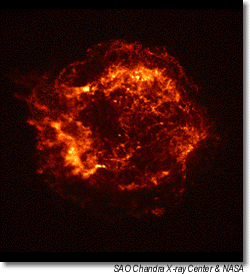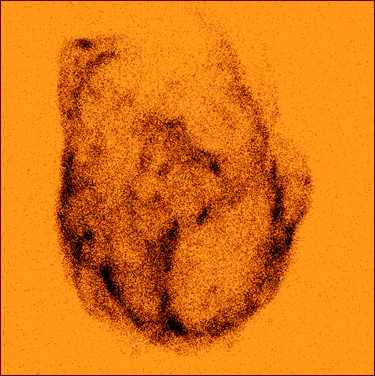m a r v e l
|
Cassiopeia A, observed August 19, 1999
“Cassiopeia A is the 320-year old remnant of a massive star that exploded. Located on the constellation Cassiopeia, it is 10,000 light years from Earth. The X-ray image shows an expanding shell of hot gas produced by the explosion. The gaseous shell is about 10 light years in diameter, and has a temperature of about 50 million degrees.” from the Chandra X-Ray Observatory One light year is the distance light travels in a
year: 10 trillion kilometers.
N132D, observed September 1, 1999 “N132D is the remnant of an exploded star in the large Magellanic Cloud. The Chandra images show a highly-structured remnant, or shell, of 10-million degree gas that is 80 light years across. The remnant is thought to be about 3,000 years old. The Large Magellanic Cloud, a companion galaxy to the Milky Way, is 180,000 light years from Earth. In this image, which is like a photographic ‘negative,’ the X-ray emission is brightest where the image is darkest. This representation shows up some of the best details.” -from the Chandra X-Ray Observatory
|

